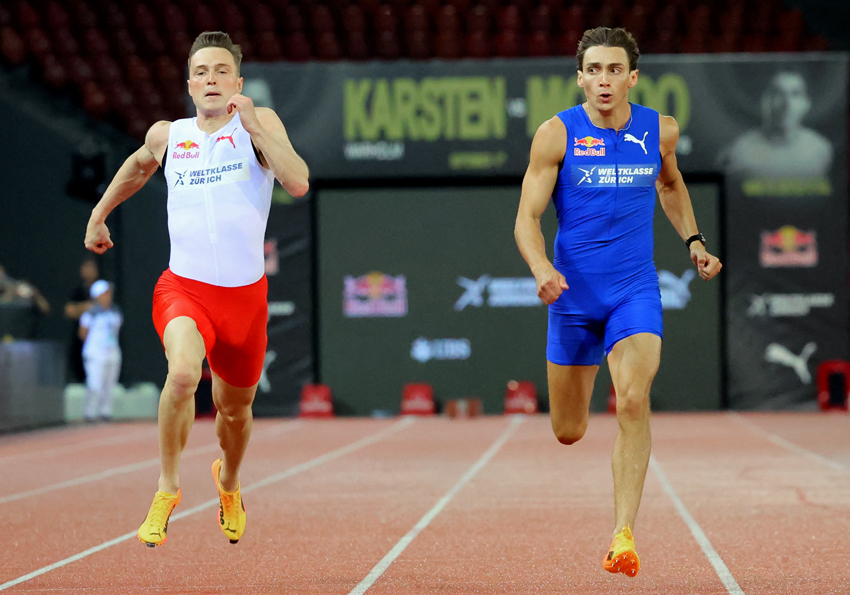Bicarbonate: can it make your interval sessions better?

It was back in the early 1980s that the use of sodium bicarbonate as a performance supplement became popular. Research at that time showed that by helping to buffer the acidity produced in muscles during very intense exercise, pre-exercise bicarbonate was able to help stave off some of the fatiguing effects of high (lactic) acid accumulation, thereby enhancing performance in events lasting between 1-5 minutes(1,2).
Renewed interest in bicarbonate
After an initial surge of popularity, bicarbonate use fell out of favor because many athletes discovered that its use was often accompanied by unpleasant side effects such as nausea and gastric distress – severe enough in many cases to be counterproductive. This loss of popularity was no doubt aided by the emergence of the supplement creatine in the 1990s, which provided sprint, strength and high-intensity athletes with another nutritional tool for improving performance, and without the issue of side effects(3,4).
In more recent years however, there’s been a renewed interest in bicarbonate supplementation. That’s because research has demonstrated that that with careful administration, many athletes may find that they can reap the benefits of bicarbonate without suffering the side effects. In particular, it seems that a staged intake (spreading the intake over a 90-minute period rather than consuming in one hit – see figure 1) is much better tolerated by the tummy. In addition, consuming the required amount (usually put at 0.3 grams per kilo of body weight – around 20 grams for a 70kg athlete) much earlier before exercise takes place also seems to reduce gastric distress without impacting on the potential benefits (see this article for an in-depth discussion)(5).
Figure 1: Staged or stacked approach to bicarbonate ingestion
You need to be logged in to continue reading.
Please register for limited access or take a 30-day risk-free trial of Sports Performance Bulletin to experience the full benefits of a subscription. TAKE A RISK-FREE TRIAL
TAKE A RISK-FREE TRIAL
Newsletter Sign Up
Testimonials
Dr. Alexandra Fandetti-Robin, Back & Body Chiropractic
Elspeth Cowell MSCh DpodM SRCh HCPC reg
William Hunter, Nuffield Health
Newsletter Sign Up
Coaches Testimonials
Dr. Alexandra Fandetti-Robin, Back & Body Chiropractic
Elspeth Cowell MSCh DpodM SRCh HCPC reg
William Hunter, Nuffield Health
Keep up with latest sports science research and apply it to maximize performance
Today you have the chance to join a group of athletes, and sports coaches/trainers who all have something special in common...
They use the latest research to improve performance for themselves and their clients - both athletes and sports teams - with help from global specialists in the fields of sports science, sports medicine and sports psychology.
They do this by reading Sports Performance Bulletin, an easy-to-digest but serious-minded journal dedicated to high performance sports. SPB offers a wealth of information and insight into the latest research, in an easily-accessible and understood format, along with a wealth of practical recommendations.
*includes 3 coaching manuals
Get Inspired
All the latest techniques and approaches
Sports Performance Bulletin helps dedicated endurance athletes improve their performance. Sense-checking the latest sports science research, and sourcing evidence and case studies to support findings, Sports Performance Bulletin turns proven insights into easily digestible practical advice. Supporting athletes, coaches and professionals who wish to ensure their guidance and programmes are kept right up to date and based on credible science.









